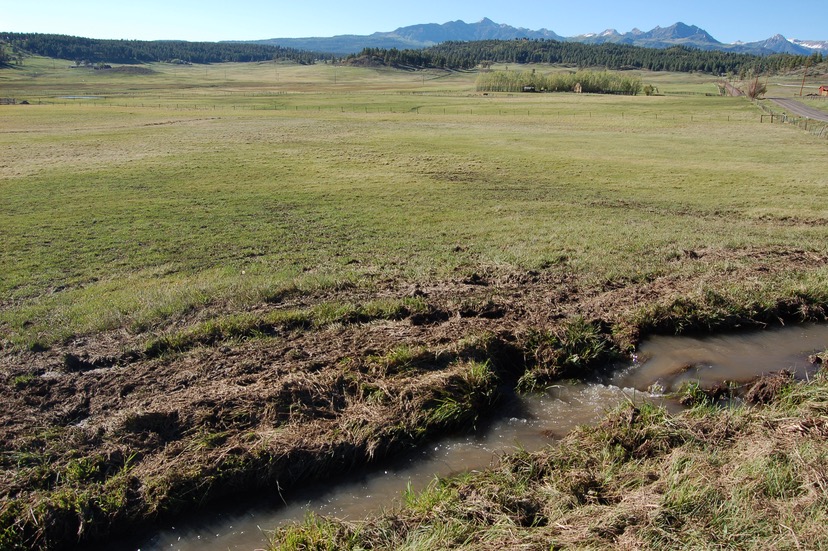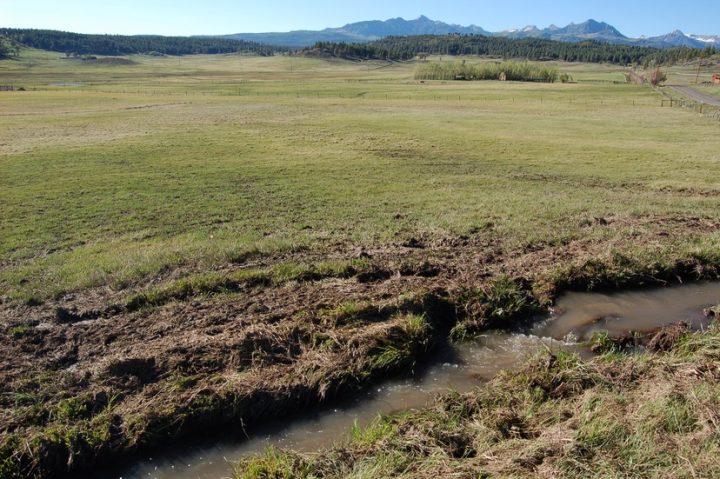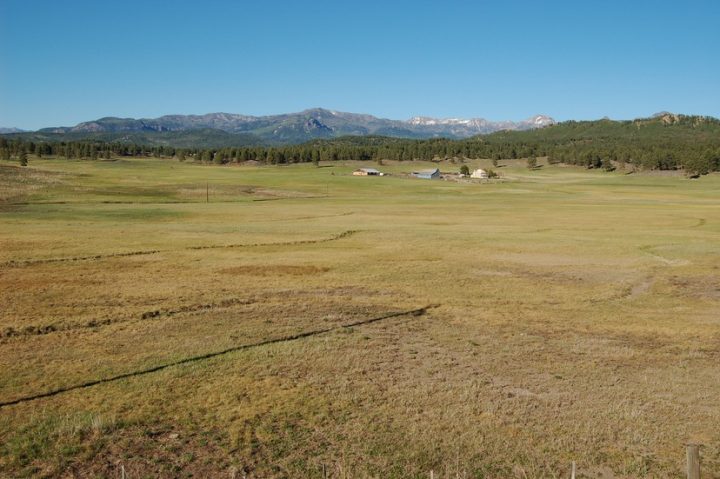Water is necessary, but it’s also easily taken for granted. And easily wasted.
In previous installments of this editorial, we’ve touched on the data from the US Geological Survey (USGS) National Water Information System showing that agricultural irrigation accounts for the lion’s share of the water used in Archuleta County. Residential and commercial uses amount to about 2,700 acre feet per year; irrigation accounts for about 47,000 acre feet. According to USGS.
If agricultural users were paying for water the way commercial and residential users do, this comparison might look very different. But what commercial and residential users are paying for is ‘water treatment and delivery.’ Ordinary citizens pay for ‘drinking water’… clean drinking water, from the tap.
Agricultural users in Archuleta County do not need their water to be treated by a water district; they use ‘raw water’. They also maintain, on their own dime, various ditches and pipes to deliver untreated water to their ranches and farms. Agricultural users typically have ‘senior water rights’ that give them priority access, whenever water is in short supply. The water is free, to agricultural users… if you don’t count the effort to build and maintain the diversion structures.
We thus find ourselves with a Pagosa industry that reportedly accounts for 94 percent of total water diverted from rivers, creeks and streams. Agriculture does not, however, provide 94 percent of the community’s overall economic activity. According to the US Department of Agriculture, the total net income from farming and ranching in Archuleta County in 2017 was -$2.1 million. That’s negative $2.1 million, net income, resulting from about $11.2 million in agricultural sales. That’s an average loss of $5,291 per farm. 68 percent of our local farms and ranches sold less than $10,000 in products. According to USDA.
This industry uses 94 percent of the community’s water, and overall, loses money doing it.
Does this make sense to anyone, if the American West is struggling with water shortages? Well, maybe it does.
I have a romantic vision of what Archuleta County may have looked like, and felt like, back in 1920, when the countywide population was about 3,600 people. About one-third of those folks lived within the incorporated town of Pagosa Springs, and the others lived on farms and ranches scattered across the county. These ranchers and farmers (in my romantic vision) rose early in the morning — spring, summer, fall and winter — to milk the cow, feed the chickens, water the horses, and perform the myriad jobs required by farmers and ranchers. They had little money, but here in Pagosa Springs in 1920, there was little opportunity to spend money in the first place. Every fall at harvest time, they would buy enough San Luis Valley potatoes to get them through the winter, and slaughter a pig, and get ready for a long, cold winter. Come spring it was time to clean the irrigation ditches and prepare for another growing season.
In my imagination, the people of Archuleta County in 1920 were greatly outnumbered by cows, sheep, deer and elk. Probably even by the turkeys. And everyone had access to plenty of water.
So much water, they could afford to take it for granted. After all, they had ‘senior water rights’ that predated the 1922 Colorado River Compact that would soon be signed by most of the western states served by the Colorado River.
If we drive around this community in 2020, we find a very different situation. There’s still a small town just west of the Highway 160 and Highway 84 intersection… but the cows… the sheep… the deer and elk… are few and far between.
It’s difficult to locate anything that might be considered a “farm.” And the ranches… well, many of them have been sold to very wealthy individuals who wouldn’t, for the life of them, know how to slaughter a pig, or milk a cow.
Here’s a photo of the lovely view looking northwest from Snowball Road on May 20, 2020. I’m not sure how many ranches we can see in this photo… maybe two… or three?
At the bottom of the photo, we can see a full irrigation ditch bubbling happily along.
Here’s a shot of another ranch property, located along Highway 84.
I assume the beautiful, spacious properties shown in these photographs were, back in the 1920s, working ranches that made the best possible use of their water rights. But in the spring of 2020, both were devoid of livestock. It’s possible that, during our current coronavirus pandemic, the cows are sheltering at home — out of respect for Governor Jared Polis’ public health orders. (I don’t, however, recall the orders mentioning cows.)
It’s also possible that the cows are somewhere else for the time being, and will show up to graze on these various ranches when the time is ripe.
Here in Colorado, vacant land is taxed at roughly four times the rate of residential property — unless it happens to be classed as “agricultural property”, in which case the property tax rate is extremely low. In order for ranches, like the ones shown in the photos above, to be classed as “agricultural”, the owner simply needs to run cattle or sheep or other “livestock” on the property for a few weeks out of the year. So it’s become a popular business model, in Pagosa Springs, to ‘rent’ a herd of cattle to graze temporarily on your ranch, thereby allowing you to claim that your ranch is a “working ranch” and should therefore be taxed at the very low “agricultural” property tax rate.
Vast properties that were once ‘working ranches’ have become ‘trophy ranches.’
As we already mentioned, agriculture does not produce much profit for the majority of ‘agricultural’ property owners. Agricultural operations in Archuleta County, overall, actually lose $2.1 million dollars per year, according to USDA. But if you are wealthy enough to own a trophy ranch, and you can run a herd of cows for a few weeks of the year, you can avoid paying property taxes at Colorado’s onerous ‘vacant land’ rate.
Your profit doesn’t need to come from the agricultural operation itself; it can come in the form of reduced property taxes.
Which leaves us with a question: does this tax-avoidance scheme require vast amounts of water? Since we’re talking about water…



